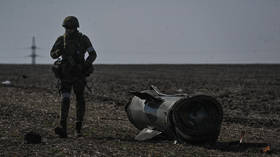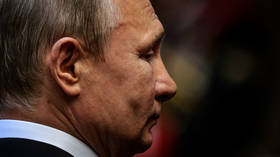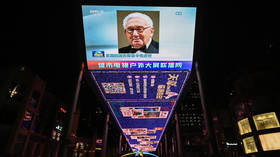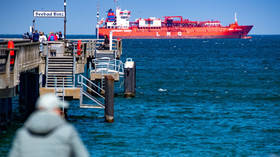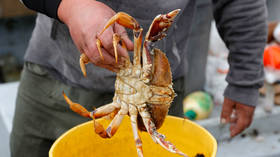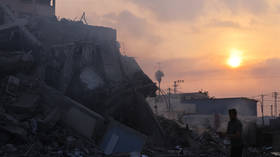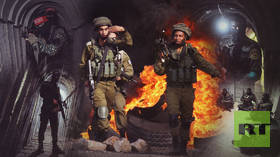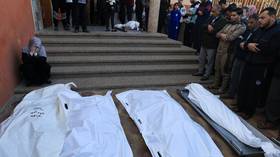Russia seizes the initiative: Has the Ukraine conflict entered its endgame?
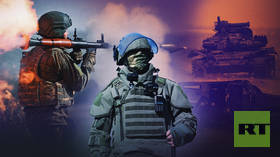
Six months after the start of Ukraine’s counteroffensive near Artemovsk [which Kiev calls Bakhmut], the operation completely collapsed and Russian troops were able to seize the initiative. Launching a series of attacks, Moscow's forces recovered some of the positions they had lost to the northwest of the city in the area of the Berkhovsky reservoir, and again took control over the line along the Artemovsk-Gorlovka railway on the southern flank.
Meanwhile, the Ukrainian plan, which implied an offensive in at least three operational directions – towards Melitopol, Berdyansk and Artemovsk – failed. Instead of focusing on one task at a time, as Western experts had recommended, Kiev dispersed its forces and did not succeed in any of its goals. Now, the Armed Forces of Ukraine (AFU) has been forced to switch from offensive to defensive tactics.
The background story
Ukraine’s initially ambitious plan to launch an offensive on Artemovsk implied taking action in at least four areas: from Chasov Yar towards Kleshcheyevka and further along the southern flank of Artemovsk; from Chasov Yar to the northern outskirts of Artemovsk, south of the Berkhovsky reservoir; from Slavyansk in the direction of Artemovsk and Soledar; and from Seversk towards Soledar.
However, this plan did not succeed because of the lack of numbers and the timely transfer of Russian units, which replaced PMC Wagner fighters involved in the final battles for Artemovsk. Attacks from the directions of Slavyansk and Seversk failed, while the assault on the city’s northern flank was only partially successful – the Ukrainian army advanced several kilometers and exhausted its offensive potential.
The AFU managed to actively gain ground only in the south, in the direction of Russia’s defenses, constructed along the Kleshcheyevka-Andreevka-Kurdyumovka line. The Ukrainians were able to take control over the first two villages only by mid-September, five months into their counteroffensive in this area. Kurdyumovka, however, is still controlled by the Russian army. In the following days, the AFU continued its eastward offensive, managing to advance past the rail line in some sections.
Apparently, the next goal of the Ukrainian army was to expand the staging area on the eastern bank of the Seversky Donets–Donbass canal in order to reach the southern outskirts of Artemovsk and the northern outskirts of Gorlovka. At just about that time, in October 2023, rumors about an impending assault on the latter began to circulate in the media.
Russians seize the initiative
In order to counteract this plan, the Russian army launched a series of counterattacks near the Berkhovsky reservoir. In their analysis of the summer campaign (dated September 25), Ukrainian military analysts from the military portal DeepState stated the following: “Things aren’t that good on the northern front, where there was initial success. But the strategic mistake of going to Berkhovka, exposed to enemy fire in the lowlands, cost us dearly. Now, the enemy has seized the initiative there.”
Based on information provided by its sources at the front, in October and November DeepState reported that the Ukrainian army had retreated from its positions. By November 24, the Russians had practically returned to their starting points, once again threatening to take control over the villages of Bogdanovka and Khromove.
Ukrainian forces in this area – primarily consisting of the Third and Fifth Assault Brigades (which largely exhausted their strength during the course of previous assaults), the 80th Airborne Assault Brigade, the Lyut Assault Brigade and their colleagues from the 22nd, 28th, 92nd and the barely-recovered 93rd Mechanized Brigades – were not able to hold back the Russian troops, especially after active battles around Avdeevka, which required the concentration of Ukrainian artillery in that area. As a result, Russian troops were able to reverse the situation in their favor, including in the area where the Ukrainians continued to slowly advance.
On October 30, Commander-in-Chief of the Ukrainian ground forces, Alexander Syrsky, reported that Russian forces were strengthening their presence in the Artemovsk area and transitioning from defensive to offensive tactics. On November 18, 19, and 24, the Ukrainians admitted that Russian troops had advanced near Kleshcheyevka, and on November 22, they reported that their enemies had moved closer to Andreevka, which was left in ruins during previous battles.
According to visual confirmation by open-source intelligence (OSINT) communities, Russian troops were able to almost completely restore their defensive line along the Artemovsk-Gorlovka railway and cross it in a number of places. The fiercest fighting is now taking place in the heights which dominate the area to the northwest of Kleshcheyevka. If they are forced to retreat, Kiev's troops will have to withdraw to their original positions so as not to remain in the lowlands exposed to enemy fire – a problem similar to the one they faced on the northern flank.
The assault on Gorlovka – foolish tactics or a PsyOp?
Why did the Ukrainians decide to disperse their forces and advance in three operational directions during the summer campaign? Several Russian experts stated that Kiev’s strategy was to win the battle of reserves –and to this end, its army attempted to create several hotbeds of tension that were supposed to swallow up Russian manpower. In case of success, the AFU would have been able to overcome the deadlock of positional warfare and deliver a crushing blow in one of the directions.
In reality, however, the Ukrainians were not able to beat the Russian army, which was strong enough to carry out both a localized offensive on the border between the Lugansk People’s Republic and Kharkov region this summer, and the offensive on Avdeevka in October. On top of that, Russian troops continued to hold their defensive lines in Kherson and Zaporozhye regions, as well as near Artemovsk. So why did the Ukrainians refuse to concentrate their forces in one area, as Western experts advised them to do?
One possible explanation for this was the reputational and media significance of the “Bakhmut Fortress,” which the Ukrainian political and military leadership fell victim to. The ‘heroic’ defense of one position, which gradually lost its strategic and operational importance, endowed Artemovsk with ideological and reputational significance. In an attempt to recapture this city, Ukrainians pulled their reserves and most motivated units into battle.
Or perhaps, the situation was even worse. After the summer defeat, they needed to distract the public from negative news. The best way to do so would have been to break through the front line separating Ukraine and the Donbass republics which had existed from 2015 to February 24, 2022. In case of success, Zelensky would have had the chance to proclaim the return of “Ukrainian” land lost by his predecessors.
One of the areas where this plan was theoretically possible to carry out was Gorlovka – a large industrial city located south of Artemovsk, where about 300,000 people lived before the war. Gorlovka has been under the control of the Donetsk People’s Republic (DPR) since the latter declared independence in 2014. Some of the fiercest battles in Donbass were fought there.
After Time magazine published an article about the conflict between Kiev’s political and military leadership around plans to storm the city (the military command refused the idea), Ukrainian expert Bogdan Miroshnikov commented on November 16: “In order to liberate it, it is necessary to conduct a strategic offensive operation and involve at least 150,000-200,000 troops along with thousands of units of equipment. Some may say that we are [positioned] near Gorlovka. Yes, we are. But that direction is surrounded by numerous spoil tips. This means a frontal assault is necessary. But no one would do that.”
However, on November 17, footage appeared of Ukrainian stormtroopers atop one of the spoil tips – which used to be in the gray zone, but formally under Russian control. After that, battles in this area intensified. The Ukrainian media, however, refused to comment, claiming that “the situation is being clarified.”
Considering the landscape with the spoil tips, a potential offensive on Gorlovka could not be carried out using several brigades. In order to start an offensive in this direction, the AFU would have needed to recover its positions to the north of the city, in the area of the southern flank of Artemovsk. Whether this was the plan of the Ukrainian leadership all along or an improvised change in operational tactics remains unknown.
In any case, the initiative in this direction has currently been seized by Russian troops, who will attempt to recover their positions and set up defenses along the Seversky Donets–Donbass canal. This would secure the area around Artemovsk and deprive the Ukrainian army of its staging area.
In order to do so, however, the Russians will need to occupy Ukrainian strongpoints near the village of Ivanovskoye, which PMC Wagner units could not seize during their attempt to encircle Artemovsk. At the time, however, it was a critically important zone for both sides, and both the Russian and Ukrainian armies concentrated their firepower there. Now, the priorities have shifted and Artemovsk – despite continuing to be the site of daily battles – is considered a direction of secondary importance.
